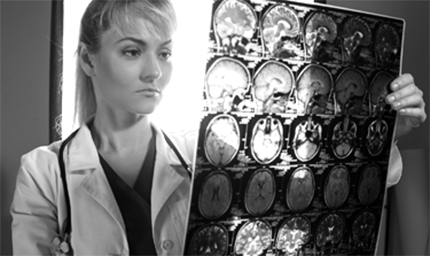Neurological Disorders
The National Institue of Mental Health
estimates that tens of millions of people are affected with mental disorders although, only about half of those affected ever receive treatment
Understanding the mechanisms that underlie diseases and disorders of the brain and central nervous system is crucial to developing treatments and diagnostic tests for their treatment and detection.

Understanding the mechanisms that underlie diseases and disorders of the brain and central nervous system is crucial to developing treatments and diagnostic tests for their treatment and detection. Although much progress has been made in recent years, a lot of work is still needed to eradicate the undue burden these disorders pose on society.
In the year 2016, Alzheimer’s was estimated to affect approximately 5.4 million Americans (nearly 44 million world-wide). More than ever, tools are needed for diagnosing and treating this disease, as it is a significant burden on the patients and families which it affects.
Differential expression profiling can identify variations in the transcriptomic or genomic profile of patients with a particular disease state, like Alzheimer’s, which is useful for developing diagnostic tests to determine whether other individuals have a propensity for, or are in the early stages of developing the disease, themselves.
LC Sciences is helping clinicians and researchers with:

Multiple classes of ncRNAs are highly represented in the nervous system emphasizing the likelihood that nervous system development and function is heavily dependent on RNA regulatory networks, and alterations of these networks may result in neurological diseases. Indeed, specific ncRNAs have been implicated in various neurological disorders1.
These molecules strongly influence gene expression, particularly in the brain where they are thought to be involved in both neurodevelopment and in the regulation of synaptic structure and function2.
Increasing evidence highlights the functions of miRNAs participating in the underlying molecular mechanism in neurological diseases such as temporal lobe epilepsy3.
LC Sciences is helping clinicians and researchers with:

Cell–cell communication is critical for regulating the immune response in traumatic brain injury, and recent studies show that miRNA carried within extracellular vesicles can trigger inflammatory responses and neuronal damage through pattern-recognition receptors1.
Ischemic stroke is a leading cause of death and disabilities in the general population worldwide and neurogenesis is associated with functional recovery after stroke. Recent studies demonstrated that miRNAs significantly regulated neural progenitor cell proliferation and neuronal differentiation suggesting a role in neurogenesis.2
Neuroblastoma (NB) is the most common extracranial solid tumor in children. Studies have revealed that large scale chromosomal imbalances result in dysregulated miRNAs which have a functional role in neuroblastoma pathogenesis and tumorigenicity3.
LC Sciences is helping clinicians and researchers with:
Neuroscience Research Services
LC Sciences offers a range of services applicable to clinical neuroscience research. Contact us to find out more.




